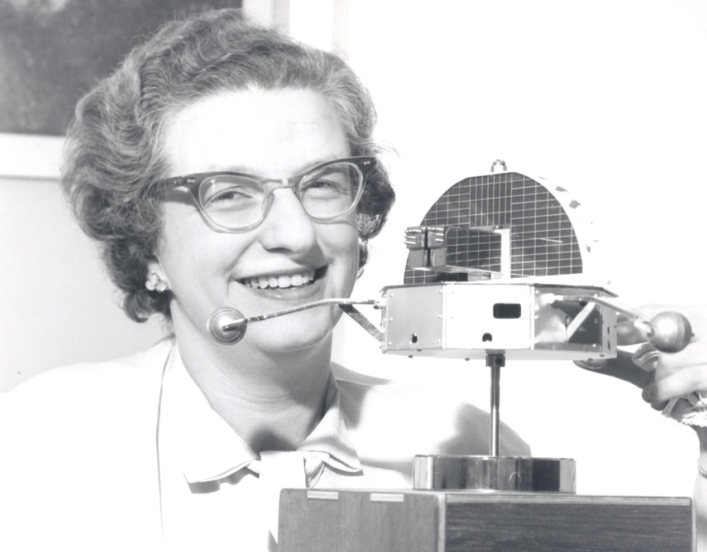Women make up only 34% of the workforce in science, technology, engineering and math (STEM), and men vastly outnumber women majoring in most STEM fields in college. The gender gaps are particularly high in some of the fastest-growing and highest-paid jobs of the future, like computer science and engineering.
The STEM Gap: Women and Girls in Science, Technology, Engineering and Mathematics
Girls and women are systematically tracked away from science and math throughout their education, limiting their access, preparation and opportunities to go into these fields as adults.

Why So Few? Women in Science, Technology, Engineering & Mathematics
Learn more about how we can change policies and practices to increase opportunities in STEM for girls and women.

Solving the Equation: The Variables for Women's Success in Engineering & Computing
Engineering and computer science — two of the most lucrative STEM fields — remain heavily male dominated. Only 21% of engineering majors and 19% of computer science majors are women. Read AAUW’s research report for ways we can stop steering girls away from math and science, and make these fields more welcoming for women.
Tracking Girls and Women Out of Higher-Paying STEM Areas
Giving women equal opportunities to pursue — and thrive in — STEM careers helps narrow the gender pay gap, enhances women’s economic security, ensures a diverse and talented STEM workforce and prevents biases in these fields and the products and services they produce.
A typical STEM worker earns two-thirds more than those employed in other fields, according to Pew Research Center. And some of the highest-earning STEM occupations, such as computer science and engineering, have the lowest percentages of women workers.
Key factors perpetuating gender STEM gaps:
- Gender Stereotypes: STEM fields are often viewed as masculine, and teachers and parents often underestimate girls’ math abilities starting as early as preschool.
- Male-Dominated Cultures: Because fewer women study and work in STEM, these fields tend to perpetuate inflexible, exclusionary, male-dominated cultures that are not supportive of or attractive to women and minorities.
- Fewer Role Models: girls have fewer role models to inspire their interest in these fields, seeing limited examples of female scientists and engineers in books, media and popular culture. There are even fewer Black women role models in math and science.
- Math Anxiety: Teachers, who are predominantly women, often have math anxiety they pass onto girls, and they often grade girls harder for the same work, and assume girls need to work harder to achieve the same level as boys.
The Confidence Gap
The myth of the math brain is one of the most self-destructive ideas in American education – research shows no innate cognitive biological differences between men and women in math.
Many girls lose confidence in math by third grade. Boys, on the other hand, are more likely to say they are strong in math by 2nd grade, before any performance differences are evident.
A gendered math gap exists in elementary school — but it is really only evident among boys from higher-income and predominantly white areas performing significantly higher in math, even compared to girls attending those same schools.
Girls score higher than boys in math in lower-income, predominantly Black areas (representing around one-quarter of school districts), but their scores are still disproportionately low compared to scores for white boys in high-income areas.
Women are Underrepresented in STEM Workforce
By the time students reach college, women are significantly underrepresented in STEM majors — for instance, only around 21% of engineering majors are women and only around 19% of computer and information science majors are women.
- Nearly 80% of the health care workforce are women, but only about 21% of health executives and board members are women, and only about a third of doctors. And, women are more highly represented in lower-paying fields, such as home health workers, nurses and the lower-paying specialties such as pediatricians.
- 38% of women who major in computers work in computer fields, and only 24% of those who majored in engineering work in the engineering field.
- Men in STEM annual salaries are nearly $15,000 higher per year than women ($85,000 compared to $60,828). And Latina and Black women in STEM earn around $33,000 less (at an average of around $52,000 a year).
Dell-AAUW Playbook on Best Practices: Gender Equity in Tech
A product of a partnership between AAUW and Dell, the Playbook on Best Practices: Gender Equity in Tech equips advocates and employers with data-driven strategies and actionable steps to increase the representation of women in engineering and computing fields – to accelerate the rate of change and break through barriers for women in the workplace.
Closing the STEM Gap
- Raise awareness that girls and women are as capable as boys.
- Give girls equitable encouragement and educational opportunities.
- Promote public awareness to parents about how they can encourage daughters as much as sons in math and science — supporting learning opportunities and positive messages about their abilities.
- Teach girls, teachers and parents that math skills are learned and change over time — promoting a growth mindset that empowers girls to embrace challenges.
- Emphasize strong and visible role models of women and women of color in math and science fields.
- Provide professional development to teachers — addressing implicit and systemic biases to raise awareness about girls’ math abilities, avoid passing on math anxiety and ensure boys and girls are held to the same standards.
- Encourage girls and women to take math and science classes — including advanced classes.
- Reduce tracking and high-stakes assessment in early grades that reinforce biases and stereotypes.
- Ensure every student is exposed to engineering and computer science, and Next Generation Science Standards in K–12.
- Change how classes are taught by connecting STEM experiences to girls’ lives, promoting active, hands-on learning and emphasizing ways STEM is collaborative and community-oriented.
- Teach girls of color math through open-ended and co-created problem posing and discovery.
- Expand after-school and summer STEM opportunities for girls.
- Increase awareness of higher education and career opportunities, pathway opportunities, role models and mentoring programs with women — especially women of color — in STEM for girls.
- Design courses and change environments and practices in STEM studies to be more welcoming for women.
- Prioritize diverse, inclusive and respectful environments, and strong, diverse leadership.
- Diffuse hierarchical and dependent relationships between trainees and faculty, changing power dynamics.
- Make the entire academic community responsible for reducing and preventing sexual harassment, ensure transparency and accountability, and support targets of sexual harassment.
- Campuses should fully enforce Title IX in science, technology, engineering, and math.
- Promote mentorship, sponsorship networking and incorporate male ally programs.
- Recruit more women and work to retain and promote women throughout their careers with strong advancement pipelines and continued professional development and leadership training.
- Promote welcoming work environments, including providing pay equity; flexibility; strong family and medical leave policies; inclusion and anti-bias training; mentorship, networking and ally-ship opportunities; and strong anti-discrimination and anti-harassment policies.
Break Biases
I still remember asking my high school guidance teacher to take a second year of algebra instead of a fifth year of Latin. She looked down her nose at me and sneered, ‘What lady would take mathematics instead of Latin?’

Related
Where We Stand: STEM Education

Nancy Grace Roman: The Life and Legacy of a NASA Star


